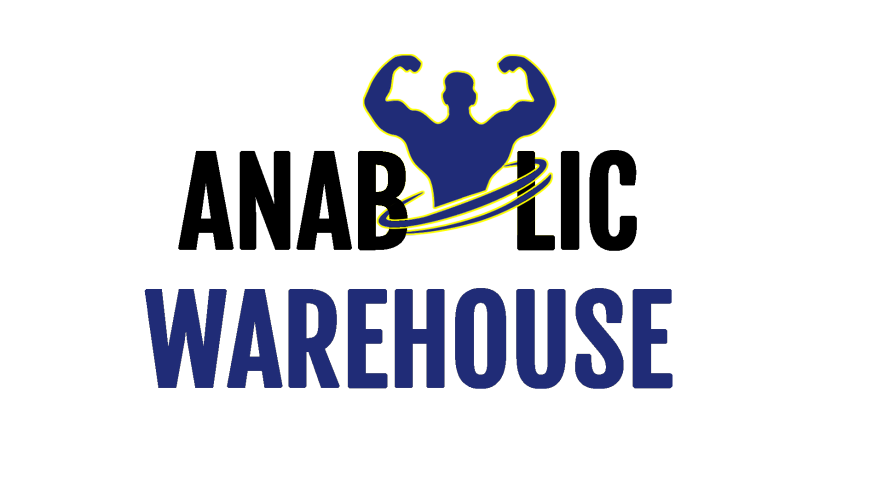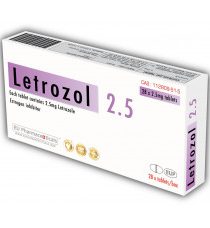- You have no items in your shopping cart
- Continue Shopping
Clomid (Clomifene Citrate) 50mg – EU Pharma Clomid
R310.00
- Strength

- Muscle Gain

- Fat/Water Loss

- Side Effects

- Keep Gains

- Anti Estrogen

Dosage: 50 mg – 100 mg / day
Quantity: 56 Tabs
Chemical Name: Clomifene Citrate
Product may differ from picture
Description
Clomid (Clomiphene Citrate) is in the class of drugs called Selective Estrogen Receptor Modulators (SERM). It has anti-estrogen effects and was originally developed as a fertility medication for women who do not ovulate normally.
Clomid is also sometimes prescribed for the treatment of hypogonadism in men as an alternative option to testosterone replacement therapy, with excellent results often seen in this area (increases the output of luteinizing hormone by the pituitary gland) which is why Clomid became such a sought-after drug for those using anabolic steroids.
In the world of bodybuilding, Clomid is highly prized for its ability to mitigate estrogenic side effects caused by many steroids during a cycle, as well as for combating the suppression of natural testosterone as a result of using steroids which is the main goal of its use in post cycle therapy.
Two of the most dreaded estrogen caused side effects that anabolic steroid users want to avoid are water retention and gynecomastia (gyno). Clomid is useful for tackling both adverse effects which, if left to advance, can lead to some serious negative implications.
Excess water retention can not only ruin your physique and mask your gains, but also lead to high blood pressure. While gyno can become untreatable if left too long, with surgery the only option. So, it goes without saying that Clomid is a hugely powerful tool in the arsenal of any anabolic steroid user.
Dosage Instructions
50 mg – 100 mg / day
The dose you take of Clomid will depend on when you’re using it and for what purpose: most notably, during a cycle and after a steroid cycle during PCT.
Clomid Dosage During Anabolic Steroid Use
Clomid is usually used at a low dose during an anabolic steroid cycle with the purpose of protecting you from estrogenic effects. Most men will find that 25mg per day is sufficient to combat these side effects for the duration of the cycle.
Some will increase this to 50mg per day if adverse effects are rearing their head but taking the dosage of Clomid any higher is not considered effective and 25mg per day is thought to be enough to mitigate undesirable effects; in the event where it is not, a different SERM like Nolvadex may be required or in some cases, turning to an aromatase inhibitor drug instead.
Female Clomid Dosage
As Clomid was originally developed as a fertility aid for women, the dosage for this purpose is generally set at 50mg per day with the occasional increase to 100mg for some women.
We can see that this is an identical dosage to that which is recommended for men to use Clomid during a steroid cycle. This indicates that 50mg or 100mg maximum is the maximum effective dose of Clomid, with higher dosages having no benefit but coming with greater side effect risks.
When it comes to females who use steriods, the use of Clomid is not necessary as neither estrogenic side effects nor testosterone suppression are a concern for females.
Clomid Dosage for Post Cycle Therapy (PCT) and Increased Endogenous Testosterone Secretion
Higher doses of Clomid are to be used for the purpose of post cycle therapy. Normally this will start in the 50mg to 100mg per day range at the start of the PCT cycle. Usually, this level of dosage will run for up to two weeks, but it depends on your steroid cycle and for some men, just one week at this higher Clomid dosage can be sufficient.
The next one-to-two-week period of PCT will then drop the Clomid dosage back down to 50mg daily, with the last week or two consisting of a 25mg per day or 50mg every other day Clomid dosage. A good PCT cycle will run for at least 4 weeks, and up to 8 weeks, so your Clomid dosage plan should be scheduled according to the length of your PCT.
Most bodybuilders will not use Clomid alone in PCT, finding that it is not effective enough as a sole drug, but instead used alongside Nolvadex and HCG (and sometimes an aromatase inhibitor as well) to maximize the efficiency that normal testosterone function can be restored. So, while Clomid is effective for some people at the above doses for PCT, most will find that Nolvadex is much more effective as a SERM.
Clomid vs Nolvadex for PCT
Another SERM drug that is popularly used for post cycle therapy is Nolvadex. There is still a lot of debate among bodybuilders about which is the better SERM to use between Clomid and Nolvadex.
Many experienced bodybuilders will make use of both Clomid and Nolvadex in PCT while also combining these with Human Chorionic Gonadotropin (HCG) in order to kickstart the natural testosterone production process.
Many believe that Nolvadex is simply a better, more effective and more powerful SERM than Clomid, but like all things with anabolic steroid use, it often comes down to the individual and how your body reacts to each drug.
Clomid is often thought of as a more effective testosterone booster, while Nolvadex can excel better as an estrogen blocker. They are both anti-estrogens however and both can stimulate the release of GnRH (Gonadotropin Releasing Hormone) which increases the output of luteinizing hormone by the pituitary gland, and this then leads to an increase in testosterone levels.
Regardless of this however, consensus still states that a combination of these drugs is the most ideal way to undertake PCT and get the best possible outcome when it comes to resorting testosterone levels and maintaining the gains you’ve worked hard to build during your cycle.
Both Clomid and Nolvadex are effective drugs for PCT for the most important purpose they are intended for, and that is to increase endogenous testosterone levels. Those using very powerful steroids are likely to have a more complex and potent PCT, but for guys who are for example on their first testosterone only 8 weeks steroid cycle then Clomid is likely to be all you need to recover.
Effect on Cycle
Clomid for Gynecomastia:
When estrogen levels rise too high in a man’s body, one distressing side effect is the development of excessive breast tissue in a condition called gynecomastia, a.k.a “man boobs” or just gyno for short.
Along with water retention, gyno is the worst things that can happen to your physique as a result of using steroids. If left for too long, gyno can keep developing until you reach a point where it’s no longer treatable by medication – and here, surgery is the only option you’ll have to get rid of that breast tissue.
So, you will want to completely avoid gyno rearing its head while you’re on steroids, but if it does start up then getting on top of it with Clomid and other drugs can ensure that all symptoms will disappear.
While Clomid is a tried and tested drug for preventing gyno, aromatase inhibitors (AI) are often the first choice these days over SERMs for preventing this and other undesirable effects during a steroid cycle.
Water retention is the other main estrogen related side effect we dread with steroid use. New steroid users can make the mistake in thinking that SERMs can also effectively eliminate water retention, but this is not the case.
Clomid and other SERMs more actively target the breast tissue and while Clomid might have some slight benefit in reducing water retention, it is rarely enough to not warrant the use of other drugs to target that specific problem.
Clomid does not directly reduce estrogen levels, which is what is needed to combat water retention. This makes Clomid very useful for preventing gyno as its main inclusion in a steroid cycle.
Clomid for Post Cycle Therapy (PCT):
When you’re on a steroid cycle using synthetic versions of testosterone or derivatives of the hormone, your body is running with much higher testosterone levels than you’d normally be able to produce. The body knows this, and as a result simply halts the production of normal testosterone, or at least decreases it to a very low level.
When you stop your steroid cycle, the sudden end to synthetic testosterone going into the body can cause a massive crash and serious low T side effects.
The purpose of PCT then is to wind your body back up to normal hormone function, and for this reason post cycle therapy is a critical part of your steroid use. Without PCT, you would be on a very slow uphill battle to wait for your T levels to get back to normal, if they ever do.
Clomid is beneficial when included in a post cycle therapy plan after a steroid cycle when testosterone levels will have been suppressed to a very low or even non-existent level because of the way that many anabolic steroids signal to the body to cease testosterone production when synthetic testosterone is being used.
The goal of PCT is to increase endogenous testosterone back to normal levels so you can avoid the serious effects of low testosterone. These include low libido, loss of muscle mass, gaining body fat, low mood, decreased energy and strength, poor mental concentration and more.
The timing of the start of your Clomid use will depend on which steroid compounds you’ve used in your cycle and what the active life of each steroid is.
Steroids with a short life can have you needing to start PCT within just days of finishing your steroid cycle, while some other large ester steroids can require you to wait two weeks before starting post cycle therapy as the steroid effects continue to remain active for some time after your last dose.
Depending how heavy your steroid use is, it can take many weeks or even several months to recover your normal testosterone function and restore levels to what they were before your steroid cycle. Clomid then is one powerful, but not necessarily the only tool in the box when it comes to effective post cycle therapy.




